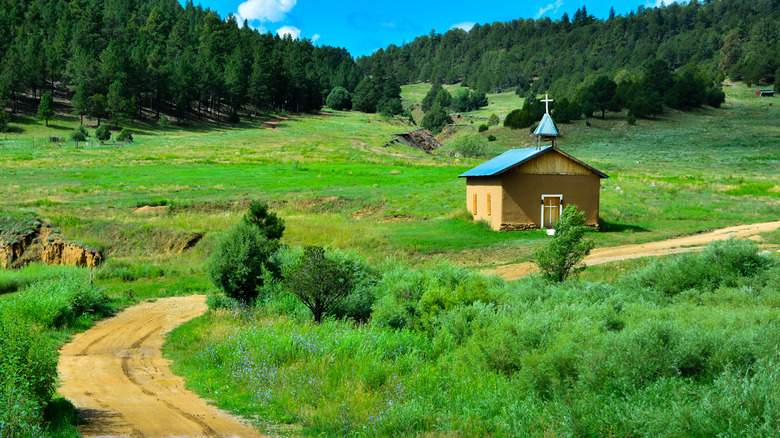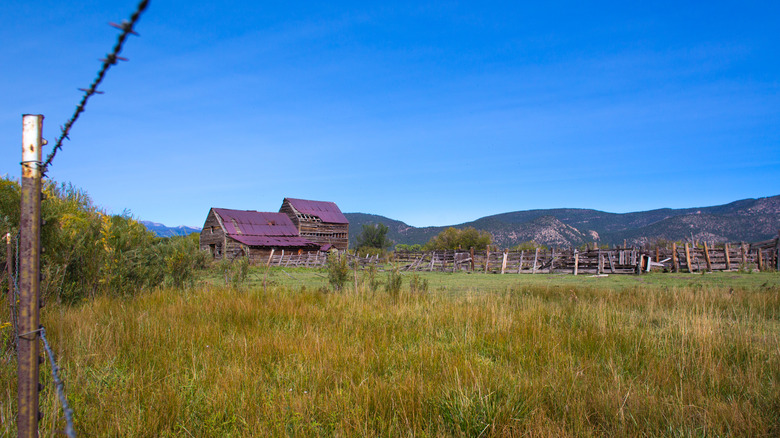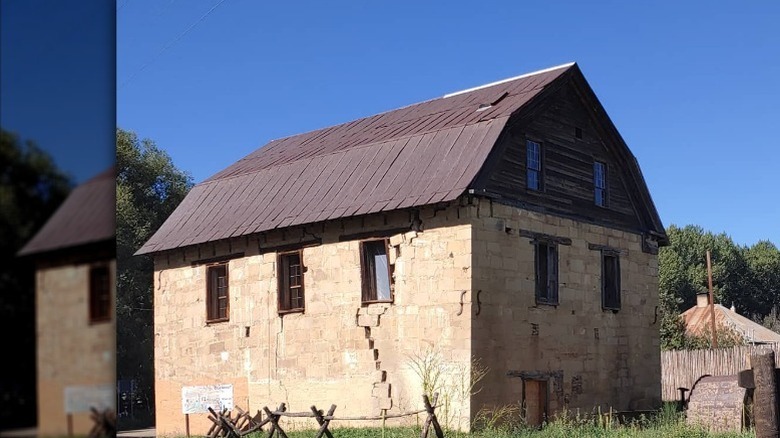The Former Breadbasket Of New Mexico Fuses Santa Fe Trail History With Restored Mills And Cultural Heritage
If there's one place where landscapes of rolling fields perfectly intertwine with a rich, storied past, it's Mora, New Mexico. Once dubbed the state's breadbasket, this unassuming hub is often looked at as just a place to pass through on the way to the Fort Union National Monument. And while the landmark, which lies about 39 miles away, is definitely worth a visit, it's time to see why Mora is a one-of-a-kind attraction of its own.
With its agricultural roots, peaceful river, traditional (now restored) mills, and fascinating cultural heritage, this New Mexico gem promises all the historical immersion of bigger towns and cities, all while maintaining that authentic rural haven feel. Coming here is pretty easy, too. If you're driving from Albuquerque, the trip through Interstate 25 should take roughly 2 hours, while those visiting from Santa Fe are looking at a 98-mile drive. Public transport isn't really widespread in these parts of the country, though, so having your own car is a must.
Mora's rich Santa Fe Trail history
Officially settled under the 1835 Mora Land Grant, Mora itself has played a pivotal role in the Santa Fe Trail's history. Thanks to its rich soil and growth-friendly climate, it served as a critical supply point for Fort Union, helping feed not only travelers but also military posts. Today, you can take the historic Route 161, a surprisingly scenic byway of the Santa Fe Trail, straight to the Fort Union National Monument, where you'll find well-preserved wagon ruts and adobe ruins. Luckily for visitors, the monument is open daily from 8 a.m. to 4 p.m. and entry is free, so there's nothing keeping you from taking in a bygone era of westward expansion and Mora's integral role in it firsthand.
And if you're looking for something historical to explore within a 5-mile radius of Mora's center, you can't go wrong with the La Cueva Historic District, complete with a mercantile building, a church, a farm, and a mill. It's a mid-1800s hacienda whose landmarks were all once part of the old ranching economy. Here, you'll still see the visible remnants of acequias (irrigation ditches) fed by the Mora River, which shows you exactly how settlers harnessed the land.
With all that said, finding a place to stay inside Mora can be tricky, given that beyond the Historic Mora Inn and a couple of nearby cabins and RV parks, your options are pretty limited. Not to worry, though, you can always stay at the St. James Hotel and take on the back-and-forth drive. It'll be worth it since not only is this place located right on the Santa Fe Trail, but it's also a treasured landmark that comes with a saloon, restaurant, and plenty of history.
Exploring Mora's iconic restored mills and cultural heritage
The Mora Valley was once home to seven mills scattered along its 7 miles of river. Today, however, only three remain: St. Vrain Mill, the Cleveland Roller Mill (now turned museum), and the La Cueva Mill.
The former was built in 1864 by Ceran St. Vrain to serve Fort Union, and it's a three-story stone building. Since its restoration has yet to be completed, however, the landmark is closed to the public at the time of writing this article, though you can definitely admire it from the outside. The Cleveland Roller Mill Museum can be visited on Saturdays and Sundays between 10 a.m. and 4:30 p.m. Adults pay a very modest fee, whereas children can tag along for free. It features everything from original water-powered machinery to in-depth exhibits on wheat farming from the 1850s and beyond, with one reviewer calling it a "fantastic glimpse of Mora history."
Your exploration of the region's fascinating heritage doesn't have to end here, though. If you drive about 115 miles north, you'll find Raton, a charming New Mexico city with a historic railroad and beautiful mountain scenery. And for those heading southwest instead, stop at Cerrillos, a near ghost town situated between Albuquerque and Santa Fe that's filled with shops, art, and historic charm.


